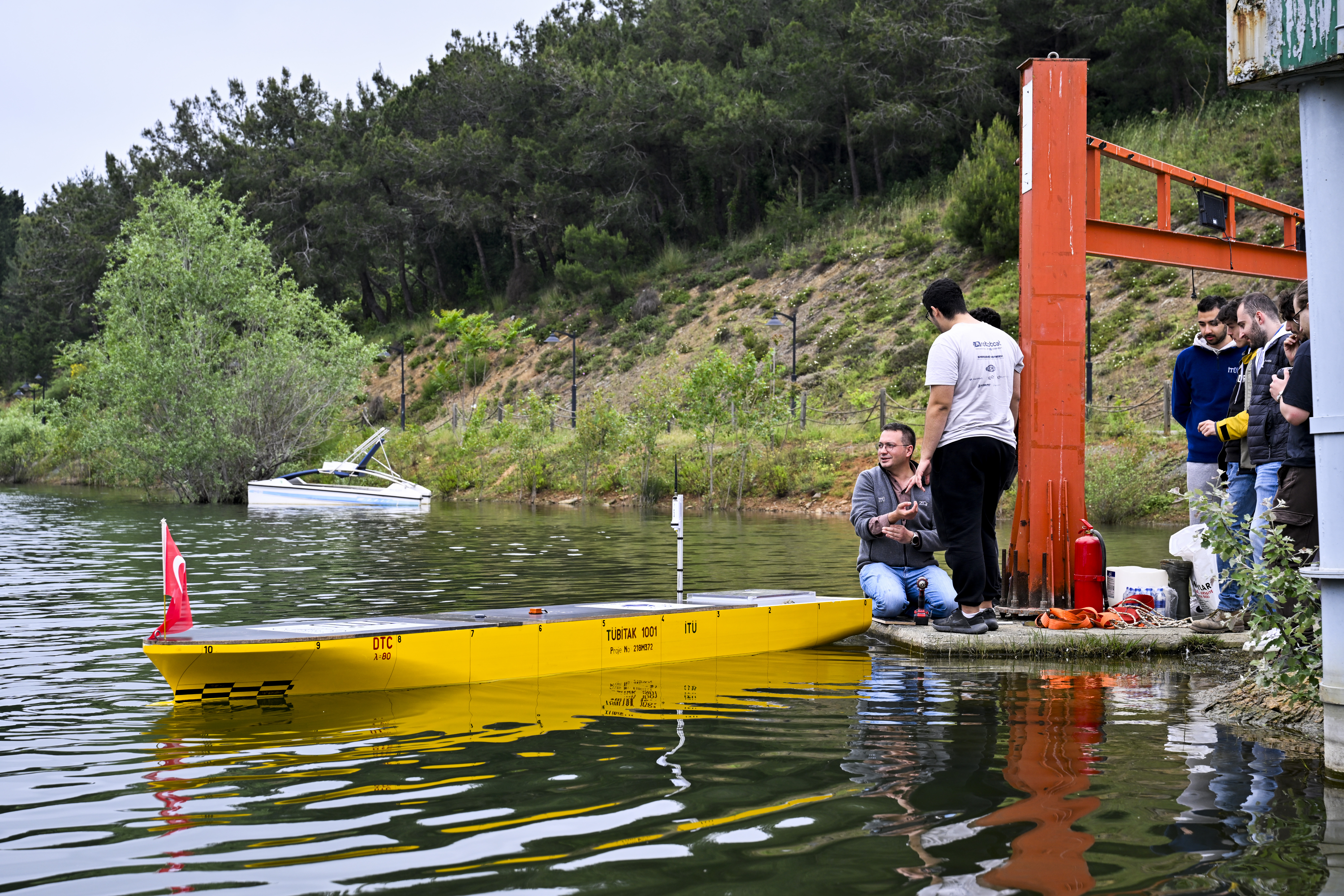
An autonomous ship project, which began in 2019 by scientists at Istanbul Technical University's (ITU) Faculty of Naval Architecture and Marine Sciences, has reached a new milestone. The 4.5-meter-long autonomous ship, launched in 2021, has completed automatic navigation tests and is now capable of moving independently. During the initial phase, the ship's underwater noise and maneuverability were measured, and remote control tests were conducted. Following the success of these tests, experts from various disciplines across multiple faculties joined the project, moving it to a new stage. The ship, produced domestically from head to toe, has now achieved full success in its automatic navigation tests. In tests conducted at the ITU pond, the ship successfully navigated to the given coordinates autonomously, demonstrating its capability to move independently. The results of these tests were found to be consistent with data from a previous numerical simulation.
Project leader, ITU Faculty of Naval Architecture and Marine Sciences Dean Prof. Dr. Omer Kemal Kinaci, spoke to AA about the project supported by TUBITAK. He noted that the ship, launched in 2021, has now entered a new phase. Kinaci explained, "We have been focusing on the control of the ship's movement for the past two years. When the ship is launched, it can proceed in the desired direction even if there are external disturbances like wind or waves. If its course deviates, it can automatically correct its direction and adjust its motor speed until it reaches the desired speed. The propulsion system works in integration with the control algorithm."  Kinaci stated that control of the ship is now automated and that they have reached the third of the six levels required for full autonomy. He added that future stages will focus on enabling the ship to maintain its position through dynamic positioning and developing its route-planning capabilities. "In the next phase, our ship will use image processing to detect obstacles and perform necessary maneuvers to avoid collisions by adjusting its rudder and propeller. Currently, we can designate a destination, and the ship can travel to that location at the desired speed. Some features to avoid collision maneuvers through image processing still need to be added," he said. Kinaci emphasized that the ship was entirely produced domestically within ITU: "Our team was responsible for the selection, design, and assembly of all the equipment inside the ship. The software managing the interaction between the ship's dynamics and the electronic control equipment was also developed by our team. The rudder and propeller were printed in our newly established Marine Robotics Laboratory using 3D printers. All work was conducted within the laboratory."
Kinaci stated that control of the ship is now automated and that they have reached the third of the six levels required for full autonomy. He added that future stages will focus on enabling the ship to maintain its position through dynamic positioning and developing its route-planning capabilities. "In the next phase, our ship will use image processing to detect obstacles and perform necessary maneuvers to avoid collisions by adjusting its rudder and propeller. Currently, we can designate a destination, and the ship can travel to that location at the desired speed. Some features to avoid collision maneuvers through image processing still need to be added," he said. Kinaci emphasized that the ship was entirely produced domestically within ITU: "Our team was responsible for the selection, design, and assembly of all the equipment inside the ship. The software managing the interaction between the ship's dynamics and the electronic control equipment was also developed by our team. The rudder and propeller were printed in our newly established Marine Robotics Laboratory using 3D printers. All work was conducted within the laboratory."
Dr. Ogr Uyesi Cihad Delen from the ITU Faculty of Naval Architecture and Marine Sciences, who was involved in the project, mentioned that the tested ship is a scale model of a container ship. Delen explained, "We successfully conducted our tests with a scale model of a fast container ship. The vessel we tested is a 1/80 scale model of a 355-meter-long fast container ship. Today, we have made the ship capable of operating independently without remote control. Essentially, we are enabling the ship to make some of its own decisions. We successfully conducted a test to enhance its ability to follow and maintain its route." These achievements highlight the potential and advancements in autonomous maritime technology developed by ITU, showcasing significant progress in the field of marine autonomy.